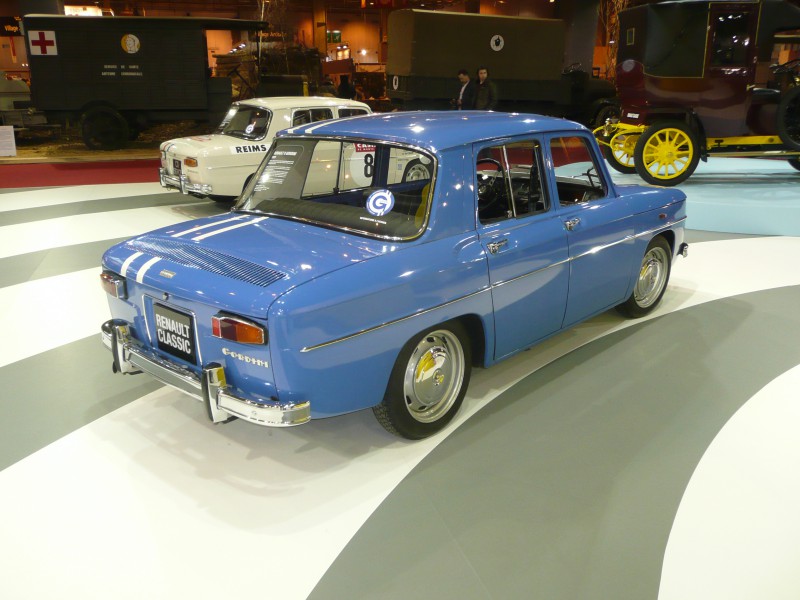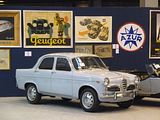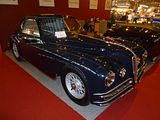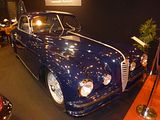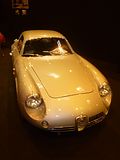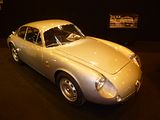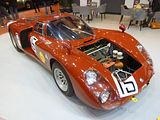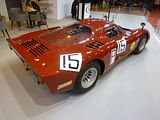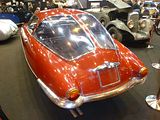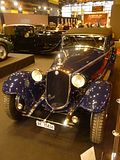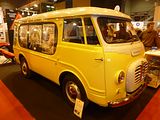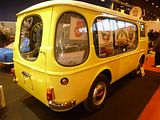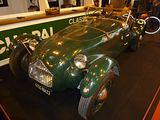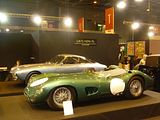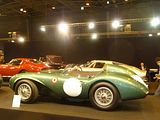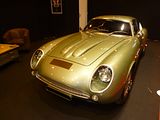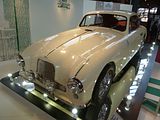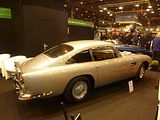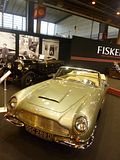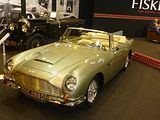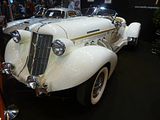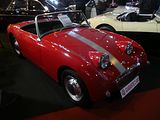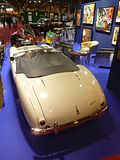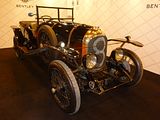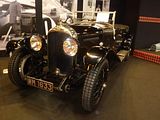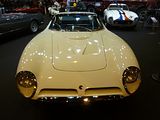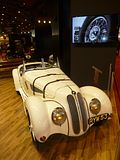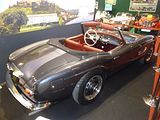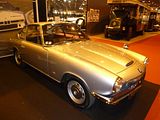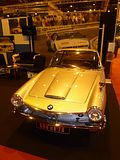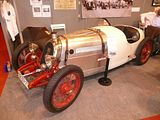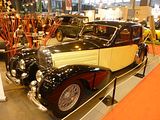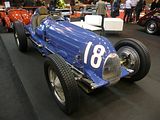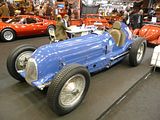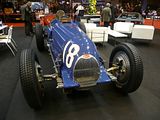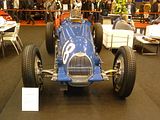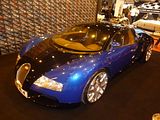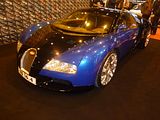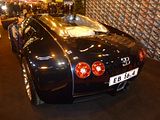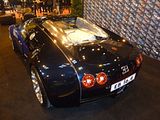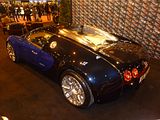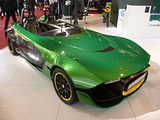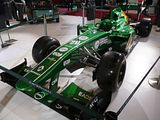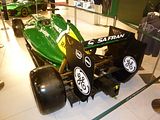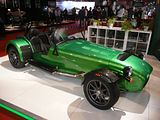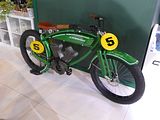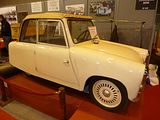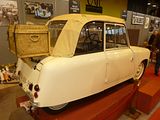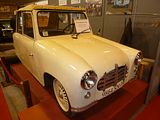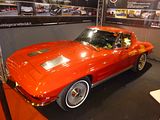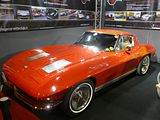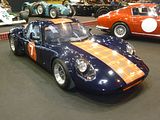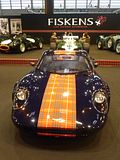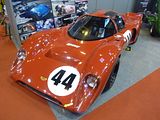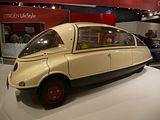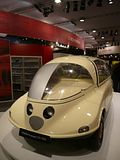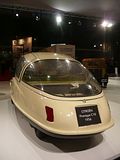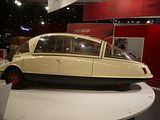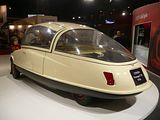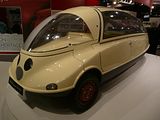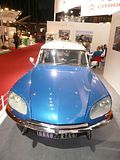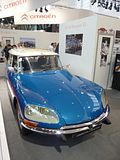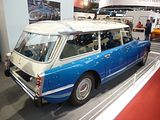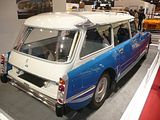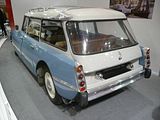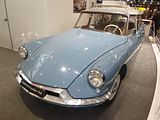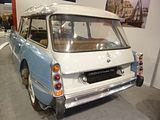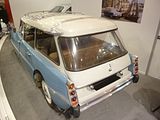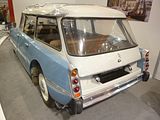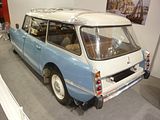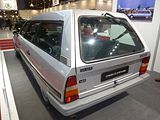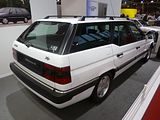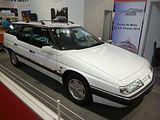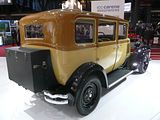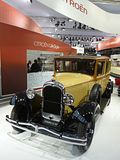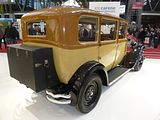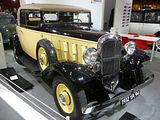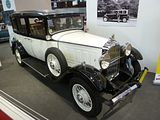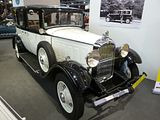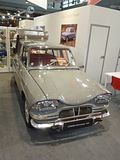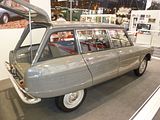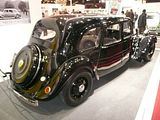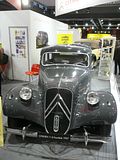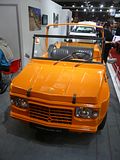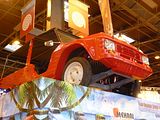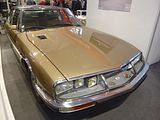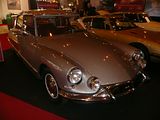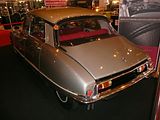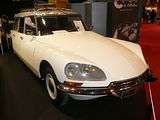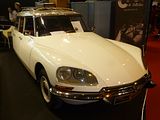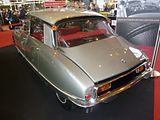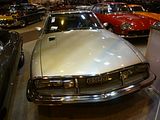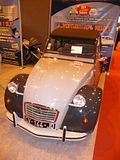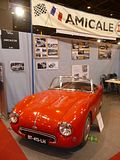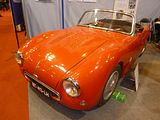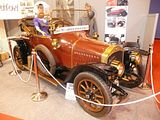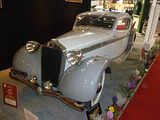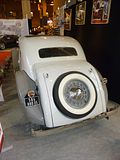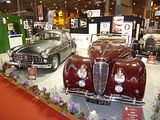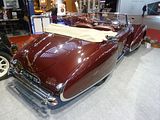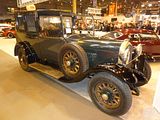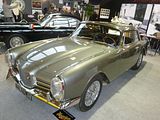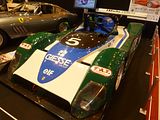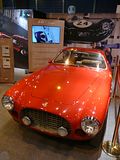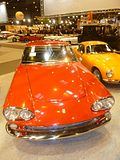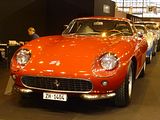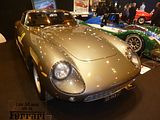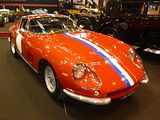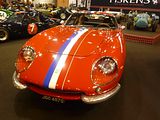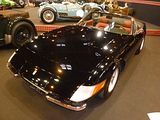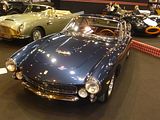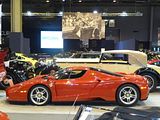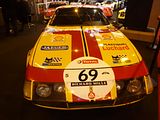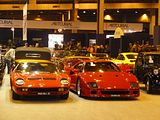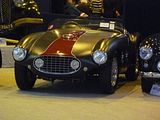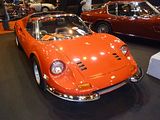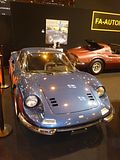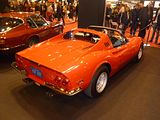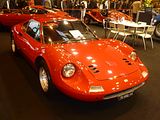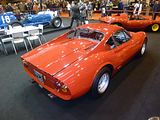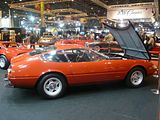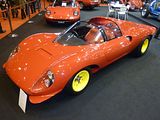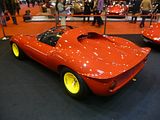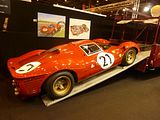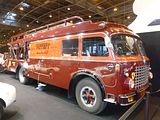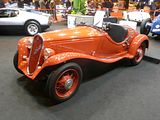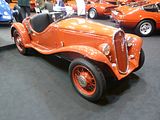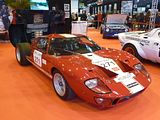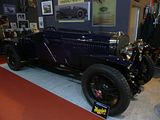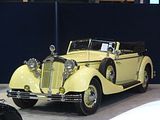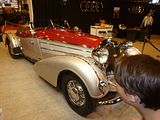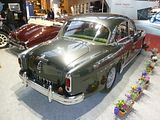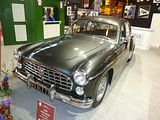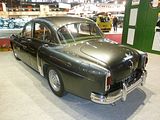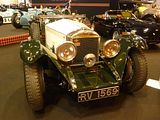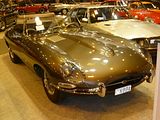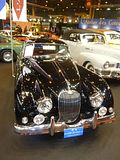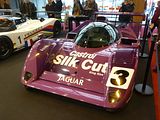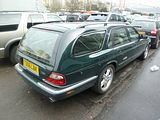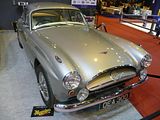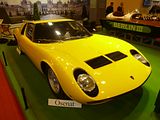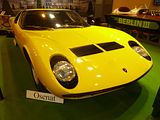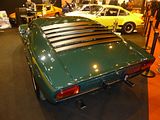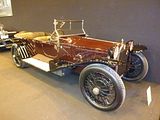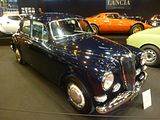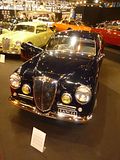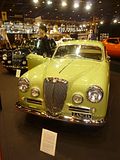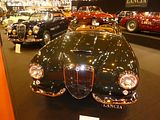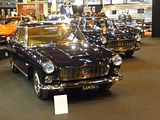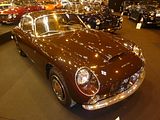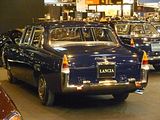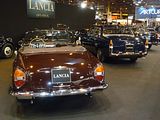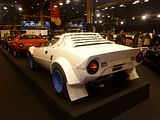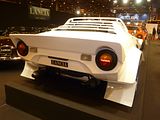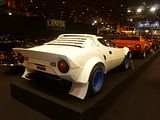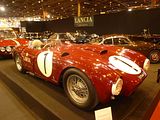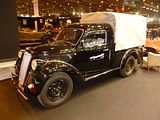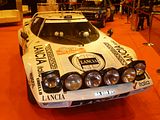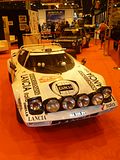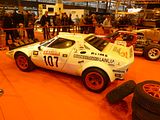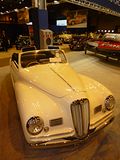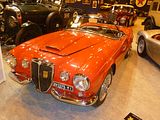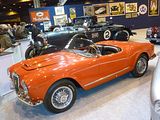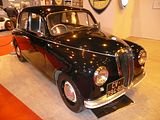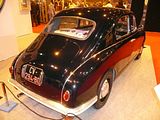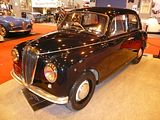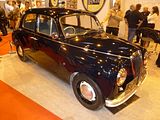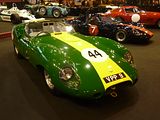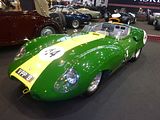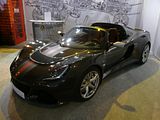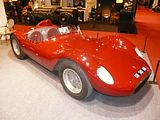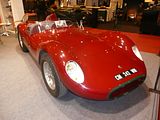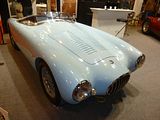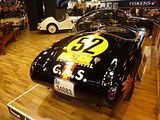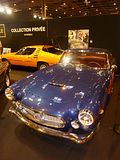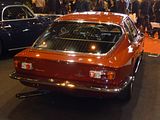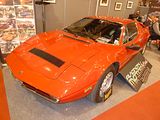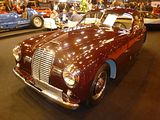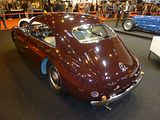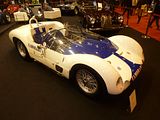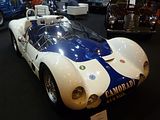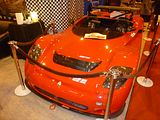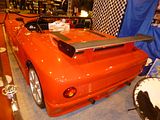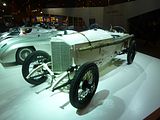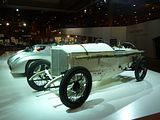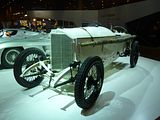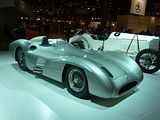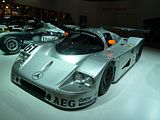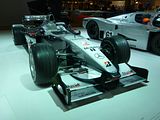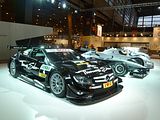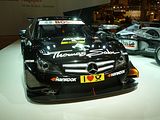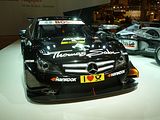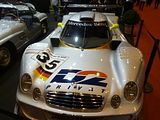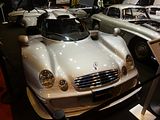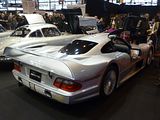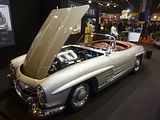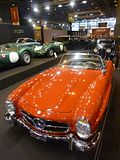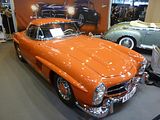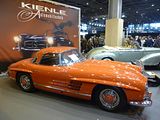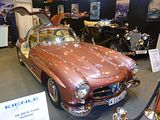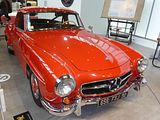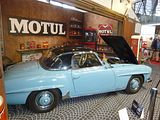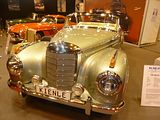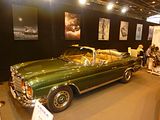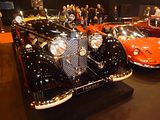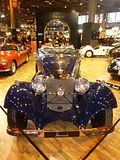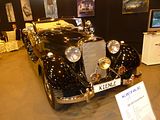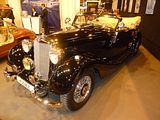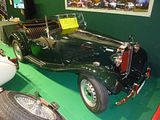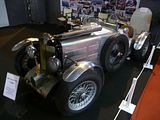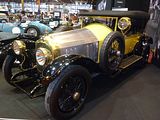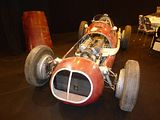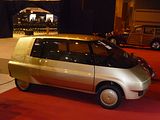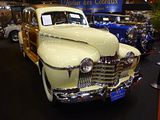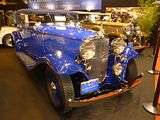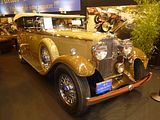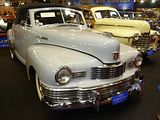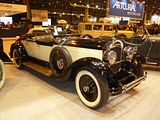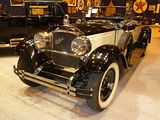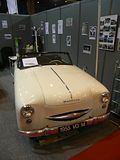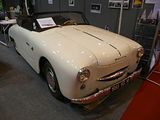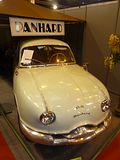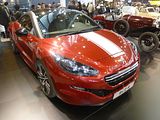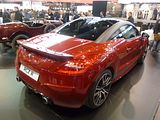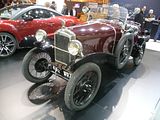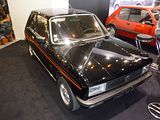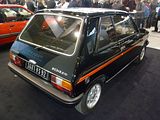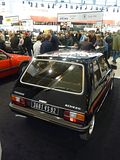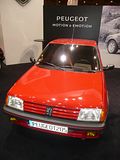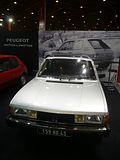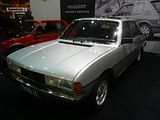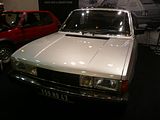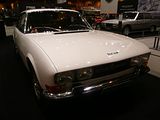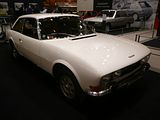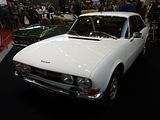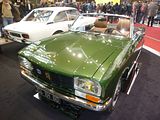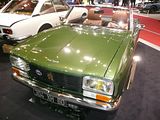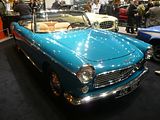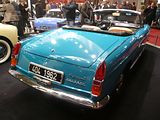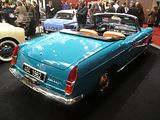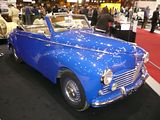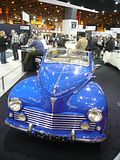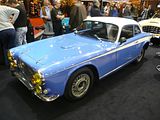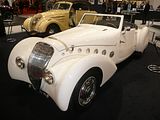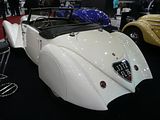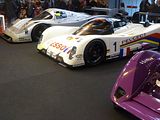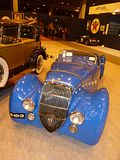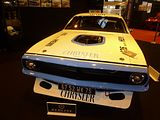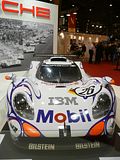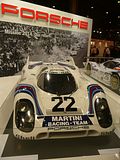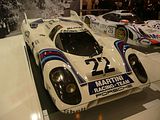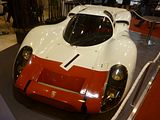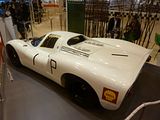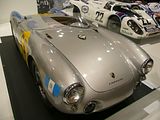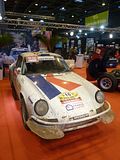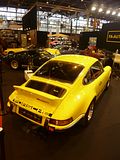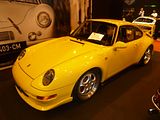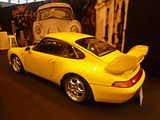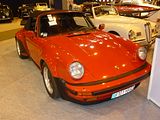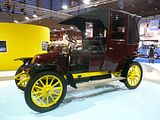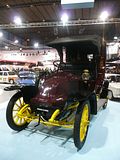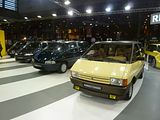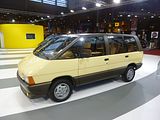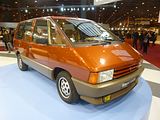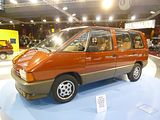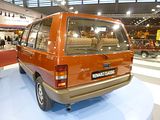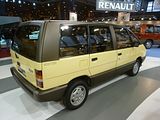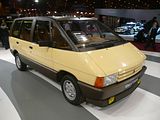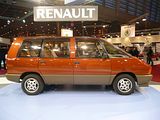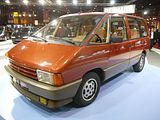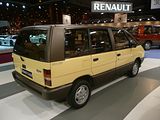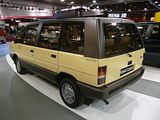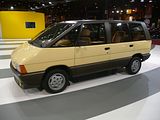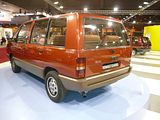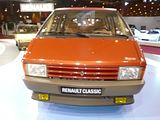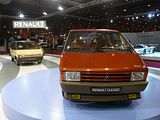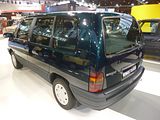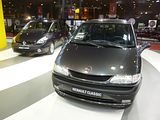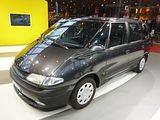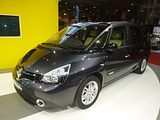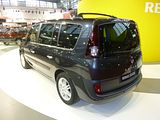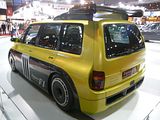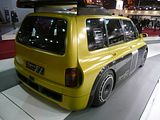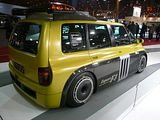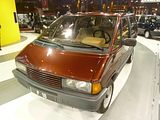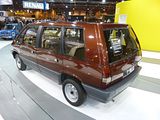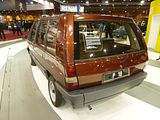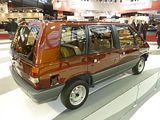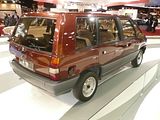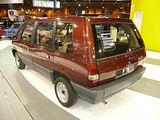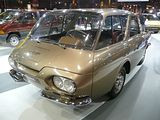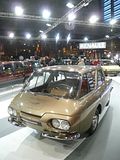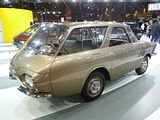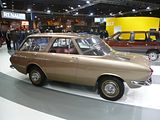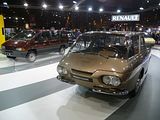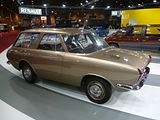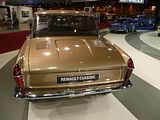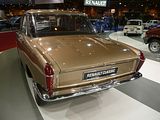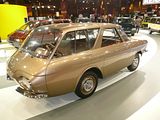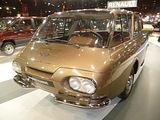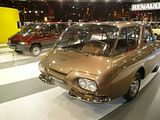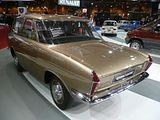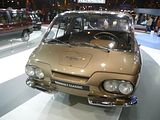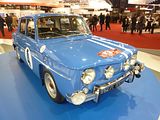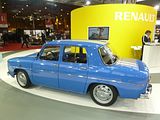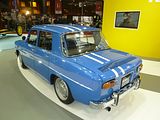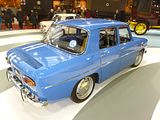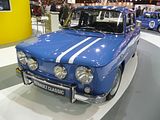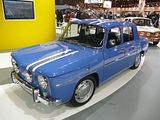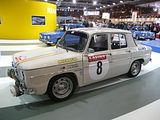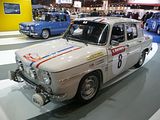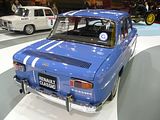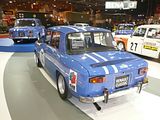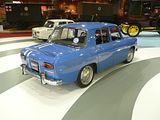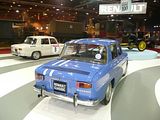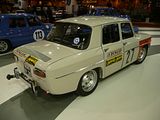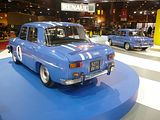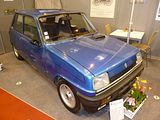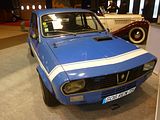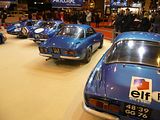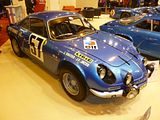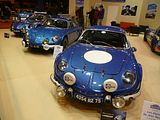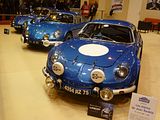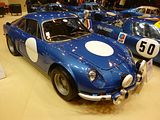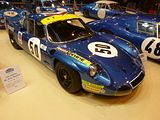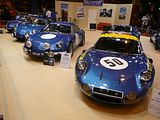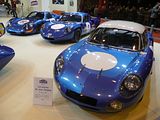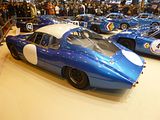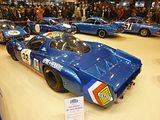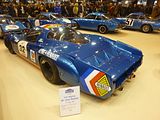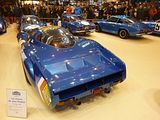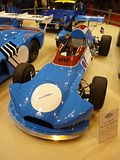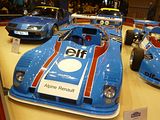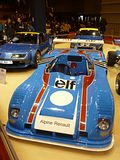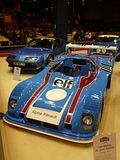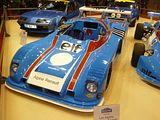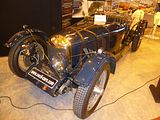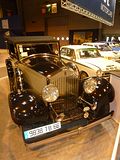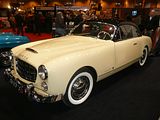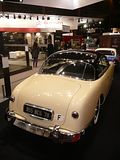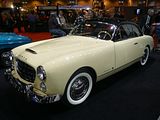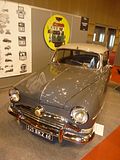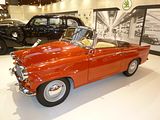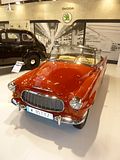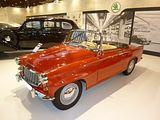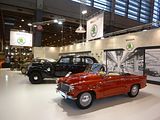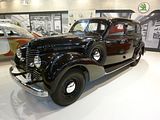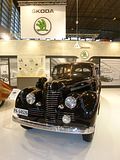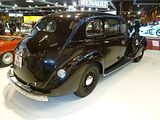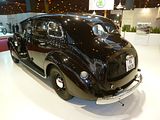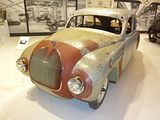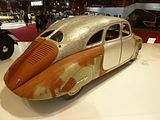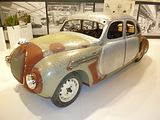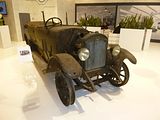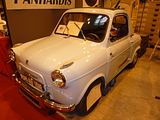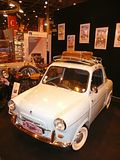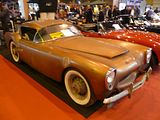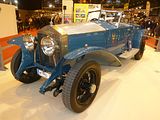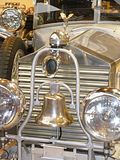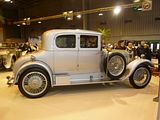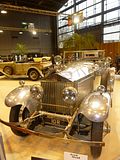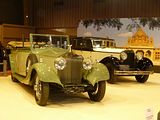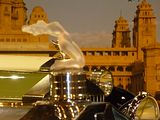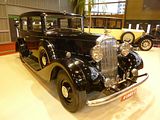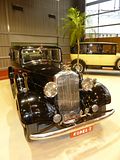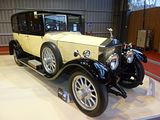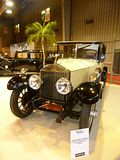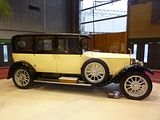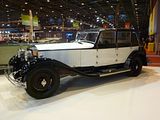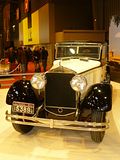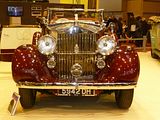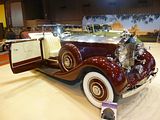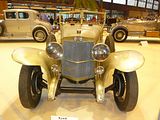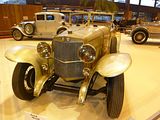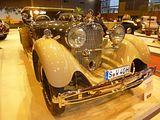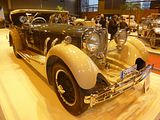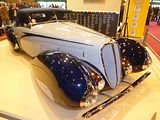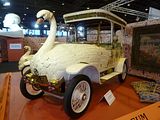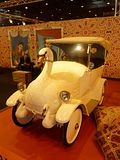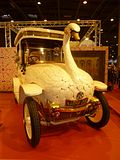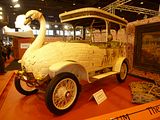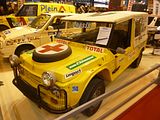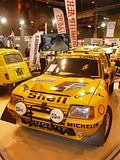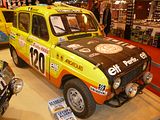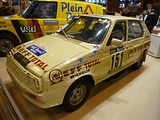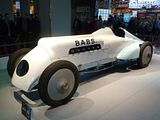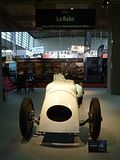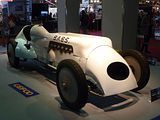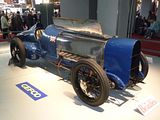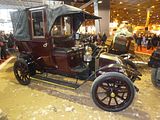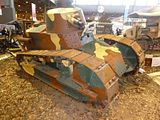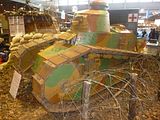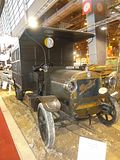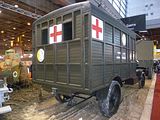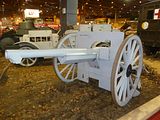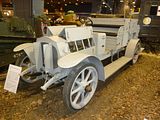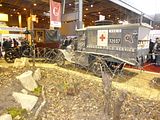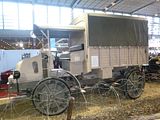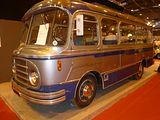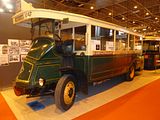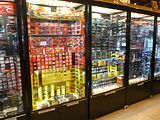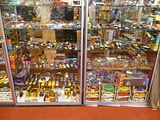To the automotive cognoscenti, the annual Rétromobile event needs little introduction. Now in its 39th year, Rétromobile is the premier classic car event to take in place in France, and always manages to combine a showing of some of the most elegant, valuable and historic motor vehicles with some priceless cars from the extensive heritage collections of the French domestic manufacturers and more than a few surprises, rarities or the plain bizarre items from automotive history. Many of the major auction houses have their own stands, and several of them sell off some off their treasures during the event. Taking place at the Porte de Versailles, unlike previous years where the show was spread across four of the 8 halls on site, this year everything was in Hall 1, a larger hall than the ones that have been previously been home to the array of classic vehicles. A couple of years the organisers took the brave decision to reduce the duration from 10 days to 5, which means that there is now only one weekend for those visitors who cannot visit during the week, that does mean that the event can get somewhat crowded an impression probably heightened by everything being in the one large hall. Now that I have found the optimum logistics for visiting the show, a bit of advance planning makes it not only an easy weekend trip, but not as expensive as you may think. I find it easier to fly into Paris’ Orly airport, and was able to get a cheap flight out on a Friday evening, and an excellent deal on the Hilton at the airport. The next morning, it’s an easy journey on the Orlyval, a few stops on the RER train and then the tramway, and you find yourself right at the gates of the Show. And if your legs can stand it, you can spend Day 2, as I did, enjoying the sights of Paris, before taking an evening flight back to the UK. I spent the whole of the Saturday at Rétromobile, revelling in a vast array of some fabulous and fascinating machinery, as will be evidenced by this report.
ALFA ROMEO
The biggest display of Alfas was to be found in the group offered for auction by Artcurial. However, most of the cars were parked up out of sight, and so I did not see more than a few which had been left out on the front of this auction house’s vast stand.
There were plenty of other Alfa scattered throughout the show, though. I did like the 6C2500 cars, of which there were a few. These were made in the immediate post war period, and were the last of the exclusive Alfas before they switched to more of a volume set of models based on the 1900 and then the Giulietta.
Even lovelier than these were this 1960 Giulietta SZ “long tail”.
Valuable though the SZ is, this Tipo 33 is worth even more.
This rather unusual looking model is a one-off Boano 1900 CSS that was built for the 1955 Geneva Show.
This is an 8C2300, with a different body from the more commonly seen Touring and Zagato styles.
Stealing the show for sheer commercial chic was the Alfa Classic Club de France’s glass-backed Alfa Romeo ‘Romeo 2’. One of 21,722 Romeo 1, 2 and 3 vans built from 1954-’63 before the model was replaced by the updated F12 – and one of only two in the country – it featured the all-alloy twin-cam Giulietta motor or, even more intriguingly, an optional Perkins diesel with Roots supercharger.
ALLARD
ASTON-MARTIN
This trio of Le Mans cars from the 1950s were tantalisingly distant from where the photographer could access. DBR1. DB3S and DBR4
Still off limits to most show go-ers, but far easier to see was this DB4 Zagato
Other Astons included a DB2/4, and a DB5 as well as a short wheelbase DB6 Volante.
AUBURN
The 1935 Type 852 “Speedster”.
AUSTIN-HEALEY
Among the Healeys on display were a Mark 1 Sprite, and examples of both the Austin-Healey 100 and the later 3000.
BENTLEY
1919 3 litre.
BIZZARRINI
BMW
The prewar 328 is a distinctive and popular sports car from the late 1930s.
The 507 was a very costly sports produced in the mid 1950s, not particularly well regarded when new, but which I find very desirable.
After BMW took over the ailing Glas company, it rebadged the company’s products, though none remained in production for very long. This is the 1300GT, a small coupe model.
BNC
BUCCIOLI
BUGATTI
There were not many Bugatti at the event. Among there were a couple of different Type 57
Type 59
This is the prototype for what became the Veyron, the EB 16.4. Produced in 1999, and shown as a concept at the Tokyo Show that year, it has not been seen in public for quite some time.
CATERHAM
A very similar display to the one I saw at the Autosport and Performance Car show the month previously, with the latest road cars joined by the concept Aero Seven, and the Formula 1 car.
CHARLES MOCHET
A “Vélocar” dating from 1954.
CHEVROLET
This Corvette C2 was the only Chevrolet that I recall seeing during the day.
CHEVRON
CITROEN
A vast Citroen stand comprised cars from Citroen’s own “Conservatoire” as well as a number of model specific clubs, presenting lots of variety. Most intriguing of all was this 1956 Concept C10. Zany!
One of the themes of the stand was around “estate” type cars, with an array of different models ranging from the iconic DS/ID Safari cars (among my favourite cars of the whole day) to a late model CX 25Ri and an XM as well as a 1999 Xsara Picasso.
From an earlier era was this 1931 C4 Grand Familiale.
This is the larger C6 model from 1932.
Smaller than these was this 1965 Ami 6 Break, a rare survivor of the early Ami cars before some of the more unusual styling elements were toned down.
The Traction Avant cars were represented, of course, as you might expect, in this, the model’s 80th anniversary year. Cars on show included a very late model 11b Familiale from 1957.
There was a fabulous Méhari on the stand, and the enthusiastic owner appeared to spend the entire day not just by his car, but physically touching it, making it rather difficult to get an unspoiled photo. A second (and engineless) one was up high above one of the trade stalls.
There were a couple of SM on the stand, one of which was the rare Opéra limousine
There were plenty of DS and ID cars on other stands.
The SM also featured elsewhere in the show, including at least one offered for auction.
Surprisingly, the 2CV was almost completely invisible, though this Charleston model was the very last vehicle I photographed as I made my way out of the show at closing time.
DB
DE DION
DELAGE
A very pretty D6 model dating from 1936, with a “panoramique” body.
DELAHAYE
A 1948 13M “El Govai” with cabriolet body by Figoni Falaschi
DELAUNAY BELLEVILLE
ERMINI
FACEL VEGA
FERRARI
A number of Ferrari models were on show, mostly on the various auction house stands. As such they tended to be the more valuable and rarer models. These included the 275 GTB4, a genuine 365GTS “Daytona” Spider, a 330GT, a 250 GT Lusso and an Enzo
A price of €2.55m was agreed for this 1953 Ferrari 166MM with Oblin bodywork
Elsewhere were a number of the still oh-so-pretty 246 GT Dino, along with a 365 GTB/4 Daytona.
This Dino 206SP was really rather wonderful.
The fabulous 330 P4, winner in its class, and second overall at the 1967 Le Mans 24 hour race was on show
FIAT
With that fabulous 330 P4 was its associated transporter, the beautifully restored Fiat Bartoletti 642 RN2.
The only other Fiat I spotted was this lovely little Ballila Sports car.
FORD
There were very few Fords in the show, though I did find this Mark 2 Escort in rally guise, and a GT40.
HISPANO SUIZA
HORCH
HOTCHKISS
A largely forgotten French marque, this 1954 6 cylinder Monceau model has a body by well known French coachbuilder Chapron.
INVICTA
An example of the Low Chassis S Type Invicta.
JAGUAR
No classic car show is complete, it would seem, without a few E Types. This one was no exception.
There were some of the earlier XK series, too, such as this XK150.
Jaguar’s Group C le Mans XJR9 was on show.
I spotted this car parked up outside the main hall. Although on UK plates, it was left hand drive. There was no clue as to who had built it, but whomever it was had done a neat job.
JEEP
JENSEN
Lone Jensen at the event was this 541.
LAMBORGHINI
Still perceived by many to be the first true “Supercar”, the Miura remains a striking car nearly 50 years after its launch.
LANCIA
Following the popularity of a special display of Citroen DS at the 2013 event, Swiss dealer Lukas Hueni brought together a vast assembly of Lancia models, sourced from various private collections. These were displayed in a huge and enclosed stand, so it was not that easy to see all that was on show. Pre-war models ranged from the revolutionary 1924 Lambda through the equally innovative 1938 Aprilia and the luxurious 1939 Astura.
From the 1950s were a series of Aurelia models from the 1950s with examples of the Berlina, the very pretty Coupe and the stunningly lovely B24S Spider on show.
Late in the decade, the Aurelia evolved into the Flaminia, and there were several of these on show, too, with Berlina joined by Coupe models from both Pininfarina and Zagato.
More recent cars included a couple of Stratos and the popular Fulvia Coupe.
Highlight for many would be to see this D24 racer, winner of, among other races, the 1954 Targa Florio (Taruffi) and the 1954 Porto Grand Prix (Villoresi), this car had been given to Eva Peron in Argentina and came back to Europe only in the Eighties. It is the only original D24 Competition Barchetta in private hands and forms part of a European Collection.
Displayed separately was this gorgeous little first-series Lancia Appia pick-up that belongs to German milliner Herr von Lanzenauer. Presented complete with a display of period hats, it looked as if it had been teleported in from the Goodwood Revival Car Show.
The Stratos was to be seen elsewhere in the show as well, a reminder that this was the all-conquering rally car of the mid 1970s.
I was really pleased to see this, the Group C Lancia LC2
This lovely Pininfarina Aprilia Convertible and even more droolsome B24 Aurelia Spider were offered in the Artcurial auction.
This Series 1 Appia Berlina was on the Lancia Club France’s single car stand.
LISTER-JAGUAR
LOTUS
The local Lotus club had a couple of cars on display, including the latest Elise.
MASERATI
Although there will be centenary displays of Maserati at a number of events during 2014, there was nothing special here, but there were a number of Maserati on display throughout the event. Favourite duo were this pair of 300S and a 1954 Osca-Maserati MT4 2DA.
Also nice were this 3500GT, a Mistral and a Merak.
I recall seeing a car like this, an A6G 1500 at RetroClassics in Stuttgart last year. This was one of the first road cars made by the Maserati company.
Racing was still very much in the blood, though, and one of the most iconic of all racing Maserati is this, the Tipo 61 “Birdcage”. Just magnificent!
Much more recent was this, a Barchetta.
MERCEDES-BENZ
The main Mercedes-Benz stand, right in the very centre of the show, celebrated 120 years of motor sport , with a striking display of 5 significant sporting Mercedes.
This 1914 115PS Grand Prix racer was driven by Christain Lautenschalger to success at Lyon
Juan Manuel Fangio was the driver of this 1954 W196R “Streamliner” where he triumphed at Reims, among other venues
More recent was this Sauber-Mercedes C9 driven by Jochen Mass, M Reuter and S Dickens at Le Mans
This was David Coulthard’s McLaren Mercedes MP4-15 from 2000
Final car was Jean Alesi’s CLK DTM car from 2002.
There were some further examples of the CLK racing machines.
Elsewhere in the show, the “Gullwing” 300SL was much in evidence.
The cheaper 190SL was also on show.
The 300SC was fearsomely expensive when new in the mid 1950s, and not surprisingly, only a few of these cars were made.
Conceptually similar, the W111 model 280SE Convertible made in the 1960s was also costly when new and is now worth a pretty penny or two. Very elegant.
There were a number of pre-war machines on show, too, including a 320 Convertible.
MG
An array of classic MG were packed into a small display area, just like last year, and the cars on show ranged from a few pre-war machines to some post war cars like this TD.
Elsewhere there were more MG including another TD and a TA.
MISC
NASH
OLDSMOBILE
PACKARD
PANHARD
The PL17 sported a large and roomy body, and yet motive power was small two cylinder engine. Thank the light weight and good aerodynamics for the fact that it was not as embarrassingly slow as you may have feared.
PEUGEOT
Peugeot’s stand comprised a mix of cars from the factory collection as well as some Owners Club machines. the very latest production car, the RCZ R was shown in a display alongside the diminutive Type 172R, a small “sports” car from 1926.
This trio were all privately owned, and all come from a period when Peugeot made good looking cars that appealed: the 104ZS, the 205GTi and one of my favourites of its time, the 604 GTi.
Also styled by Pininfarina were this pair of 1970 504 Coupe and 1975 304 Cabrio. Very elegant, and desirable.
One of the nicest looking cars ever to bear the Peugeot lion is this, the 404 Cabriolet, dating from 1962.
Dating from the 1950s were a 203 Cabriolet, and 403 Coupe by René Bernard.
Earlier models included a 1938 402 Darl’mat and a 1939 example of the 402B “Coach” Convertible.
Joining a couple of other Group C cars was this, the Peugeot 905.
This 402 Darl’mat Sports was on offer with Artcurial.
PLYMOUTH
PORSCHE
Porsche’s own stand focused on competition cars. These included the 911 GT1, a car built for the GT1 category at le Mans, where it competed in 1998, and of which a very small number of road car versions were produced.
The heyday of the 917 was in the early 1970. In 1971 Gijs van Lennep and Helmut Marko set a record at an average speed of 222.3 km/h over 5335.16 km.
Predating this was the equally lovely 906, and a 356 based racer.
There were plenty of classic 911 scattered throughout the show.
RENAULT
A vast stand in the centre of the exhibition comprised an interesting assembly of cars from the factory’s own “Histoire et Collection”. The first car I saw was an example of the AG1, a car better known as the “Taxi de la Marne”, which first saw service as a taxi in Paris, but on the outbreak of war in 1914, became more famous for its service taking troops to the western front in the Somme.
Hard though it may be to believe, the Espace is 30 years old this year, and to mark this anniversary, Renault had a special display on their large stand, with examples of each of the 4 model generations, as well as the amazing Espace F1.
Also included was the prototype, the Matra P18. Produced in 1981, this was originally intended as a possible follow on for the Matra Rancho, but the Peugeot-Citroen Group showed no interest in the concept, allowing Renault to take over, to change the design a little, and to incorporate their mechanicals into the car.
Even more intriguing was this, dating from 1959. Called the 900, it had a 1.7 litre V6 engine in the back of the car, and was an early attempt at providing a lot of space in a relatively compact car. Renault abandoned the idea, choosing to develop the Estafette van into a people carrier instead.
The 50th anniversary of the R8 Gordini was marked by a display comprising several of this much loved rear engined family car that showed what could be created from some very humble beginnings.
There were a few other Renault elsewhere in the show, including this R5 Alpine, and Artcurial had an R12 Gordini on offer.
RENAULT-ALPINE
For many, the highlight of the whole show would be a simply fantastic collection of cars from the personal collection of Jean Rédélé. Born in Dieppe, he set up the Alpine firm there in 1955. Alpines won the Mille Miglia in 1956 and from then on, production was diversified. Rédélé no longer focused solely on rallies; he wanted to enter Alpines for endurance races. To provide the investment required, the brand sold its manufacturing licence for the A108 to Brazil in 1961; the car was produced under the name Interlagos. This major foreign production enabled Rédélé to build his first series of prototypes, to enter the Le Mans 24 hour race, and to take part in other world championship endurance races including Monza, Targa Florio, Nürburgring, Sebring, Reims, Spa, Daytona, Montlhéry and Charade. 15 vehicles were on show, a mix of road and competition cars, all painted in the distinctive French Racing Blue and they made for a stunning sight.
1965 A110 Berlinette 1300 – Tour de Corse
1967 A110 Prototype with centrally aligned wheels -Tour de Corse et Cévennes
1968 A110 1440: 1st Tour de Corse and Coupe des Alpes

1973 A110 1800 factory model, which has just finished the 3rd Tour de Corse Historique with Jean- Charles Rédélé at the wheel
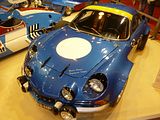
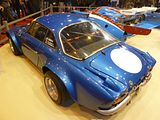
1975 A310 Groupe 4: Tour de Corse
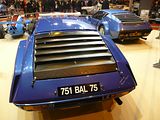
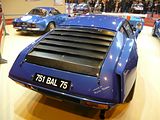
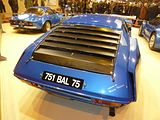
1978 A310 V6 Groupe 4: one of 6 produced.
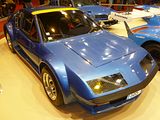
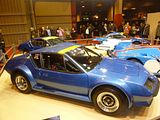
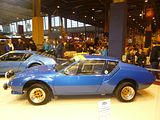


1963 M63: Charade 1,000 km and Sebring 12 hour races
1964 M64: Reims 12 hour; Le Mans 24 hour

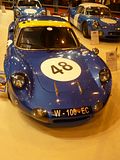
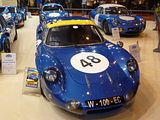
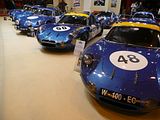
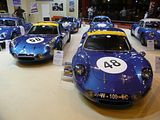

1966 A210: World championships and raced 4 times in Le Mans 24 hour
1967 A211: First 3 litre at the world championships presented at the Salon de l’Auto, 67/68 world championships, clocked at over 300 kph in Le Mans
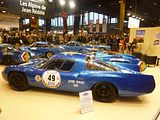
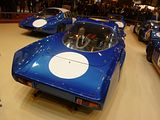
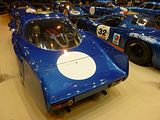
1968 A220: one of eight produced; took part in many championships including Le Mans
1973 A364 Monoplace Formula 3: first wind tunnel model for a single-seater
1975 A441: the first to take part in the world championships with Serpaggi at the wheel, then the hill race driven by Mieusset and Ortelli.
RILEY
A Nine Brooklands.
ROLLS-ROYCE
SIMCA
There were very few Simca cars at the event. I did come across this 1955 Comète Monte Carlo 1955, which was parked up among the Peugeots.
This Aronde was the mainstay of the Simca range in the 1950s.
This is an example of the larger saloon offered, the Vedette.
SKODA
A very varied collection of cars featured on Skoda’s stand. Best known of them was the Felicia Convertible, dating from the early 1960s.
Many will known that Skoda first used the Superb name plate for a large car in the 1930s, but few will have seen one. Now I have, I can report that it is vast. This example dates from 1940 and featured a 4 litre V8 engine.
Rarer than that was this recently discovered 1935 prototype 935 model. This car featured a 2 litre 4 cylinder engine mounted in the back.
Older still was this 1914 Laurent et Klemin model.
TALBOT
T23
VESPA
A couple of the small 400, a car which enjoyed modest popularity in the late 1950s.
VOISIN
Every Retromobile seems to have something really unusual. Last year it was a series of cars from Lambert, a marque no-one had heard of. This year, it was this, a 1955 Avions Voisin ‘La camionette’ prototype, complete with wacky 1957 Derny Taon 125 motorcycle on the back.
WOODHILL
Another oddity, this 1955 Woodhill Wildfire is one of approximately 200 such cars that were built on a Ford chassis, but using a glassfibre body, something of a novelty for the time.
CARS OF THE MAHARAJAH
These days we tend to think of Sheikhs in the Gulf States and Russian Oligarchs as the people with seemingly limitless money to spend, and an appetite for the very costliest products of the automotive industry. In the 1920s and 1930s, it was the Maharajahs of India who tried to outdo each other with ever more spectacular and ostentatious cars. Many of these survive, living now in a mix of private collections and museums around the world. One of the star attractions for Rétromobile 2014 was that there would be a special display comprised of a number of these machines, and I was not disappointed.
This 1928 Rolls-Royce Phantom 1-17EX is the last and most definitive version of the ‘sports Phantoms’ , one of three experimental cars that Rolls-Royce commissioned. After extensive testing and development, the car was sold to the Maharaja of Kashmir, Hari Singh, who had the car brought across to Kashmir, in India. A few years later the car was acquired by P Mitter of Calcutta, who with his brothers owned some remarkable cars: 17EX shared garage space with two supercharged Duesenbergs and two Mercedes SS. 17EX was used extensively by the Mitter family and then sold off. The car was rediscovered by a prominent Rolls-Royce authority, Protap Roy, in the 1960s and he sold it in the 1970s, when it left India. Acquired by Italian collector Dr Veniero Molari, the car was sold to Spyker owner Victor Muller, who then sold it in auction, from where Austrian enthusiast Alexander Schaufler bought the car. With Schaufler since 2009 the car has done over 24 000km as he has been participating in various rallies and tours, other than starring at the 2012 edition of Pebble Beach.
1923 Rolls-Royce Twenty, owned by Nawab Moin-ud Doula of Hyderabad
As if that was not enough, he also owned this 1926 Rolls-Royce 40/50 Phantom Barker Torpedo Tourer. Delivered in 1926, the silver Phantom, chassis # 71DC, was lavishly equipped: its door panels were polished teak, there were two veneered folding tables in the rear compartment and a special teak cabinet between the occasional seats held a camera and field glasses, as well as water bottles. But more spectacular was the exterior. Left unpainted, the car was finished in polished aluminium. Looking positively impressive, the car became famous as ‘the Silver Phantom of Hyderabad’, and was soon regarded as the most beautiful car in the state. It was in 1964 that British enthusiast William Meredith-Owen, seeking to acquire an important vintage Rolls-Royce, advertised in The Times of India and received a reply from the family of the Nawab, indicating that they might consider selling. Meredith-Owen acquired the car in 1966 when it went back to England for restoration to its original condition, and it was displayed in the long defunct Stratford Motor Museum. The Louwman Collection acquired the car in 2000 and since then has been one of the crown jewels of this famous Dutch national museum.
Delivered new to the Maharaja of Rewa in February 1930, with an open touring body by Hooper, the Maharaja had this car, a Rolls Royce Phantom II converted by Park Ward into the form of a limousine. But in its new form too, the car didn’t exactly meet the owner’s demands, either. Sometime in the late 1930s, the Maharajah decided to have the top chopped off and the car was altered into a four-door cabriolet specially equipped to be employed as a ‘hunting car’. The front seats were ‘tailored’ to allow ample space for guns to be fixed in special devices. 86XJ was re-bodied on the Maharaja’s specifications by the Rewa Motor Workshop it seems.
Making a change from the Rolls-Royce model was this 1934 Humber Snipe 80 Pullman, owned by Raja Ramanu Pratap Singh
This Rolls-Royce Phantom I used to belong to the Maharaja of Cooch Behar, Jagaddipendra Narayan Bhup Bahadur. But he reigned under the Regency of his mother, Maharani Indira Raje, who actually used the car. In 1972 Swedish collector Berndt von Sydow acquired the car. He kept the car in its original nick till 1980, when a German dealer in classic cars acquired the car, and after a couple of collectors, the car was acquired by Dr Ravi Prakash in 2010.
This 1929 Isotta Fraschini Tipo 8A, with a body by Milan-based coachbuilder Cesare Sala is powered by a 7.3-litre engine, which was the most powerful straight-eight of its time. The car cost more than a Duesenberg Model J in period and was capable of at least 93mph. It was owned new by Rajah Sajid Hussein of Kotwara, who became an Indian Maharaja at the age of just 14. He bought the car while studying at Edinburgh University, apparently opting for it over Cambridge, which did not allow first-years to own cars. On completing his course in 1932, Hussein returned the car to India that same year. By 1937, the Rajah was married to Selma Rauf Hanim Sultana – granddaughter to the Sultan of the Ottoman Empire, but the Princess died in ’41 and the Rajah remarried. He would have two children with his second wife, one of whom – Muzaffer Ali – became a respected movie-maker in Bollywood. Ali would later restore his father’s car, using it until 1972, when it was sold to the manager of Led Zeppelin, Peter Grant, and exported back to the UK. The car was auctioned in 1996, following Grant’s death, and acquired by the Imperial Palace Collection in Las Vegas, going on to be shown at Pebble Beach, before being sold to a private collection in Colorado
1937 Rolls-Royce Phantom III for Maharadja Rajaran Chahatrapti of Kolphur
1925 Alfa Romeo RL SS owned by Sultan Mohammed Shah Aga Khan III
Based on a shortened and lowered Type 630 chassis, the Mercedes-Benz Type SS Super Sports was the supercar of its day. Bought at the Paris salon of 1930, by the Maharaja of Jammu and Kashmir, Sir Hari Singh, the car was converted to right-hand drive by the factory and was displayed at the 1931 edition of the Berlin motor show before it was shipped out to India. The car stayed with the family till 1972, when it was acquired by a dealer and the car left India. The Mercedes-Benz museum acquired the car when the car came up for sale in Germany, after the last buyer had bought car from Australia.
This 1938 Delahaye 135M with bodywork by Figoni and Falaschi is now part of American collector Peter Mullins’ fabulous set of 1930s French machinery. Initially ordered by well known explorer and businessman Paul Jourde, a personal friend of Joseph Figoni, this car is one of 11 built, and today is one of three surviving cars built on the standard wheelbase. In 1939, the car was shipped to Bombay. Jourde’s Delahaye was soon purchased by an Indian prince, in all likelihood, the Maharaja of Nawanager. He sold it some years later to the Maharaja of Jaipur. Subsequently, the car was sold again and it fell from sight and into neglect. When it was finally rediscovered in 1982, it was sitting on wooden blocks in a garden shed in Indore. An English dealer bought it in the mid-1980s and had it shipped to England, where it underwent a complete restoration. In 1989, the car was taken to France and shown at the Bagatelle Concours d’Élégance, where it won First in Class, and Retromobile, where it won Best of Show. It competed in the 1992 Pebble Beach Concours d’Élégance in the Delahaye exhibition, after which it was purchased by Peter Mullin, and since then has been named the Most Elegant at Los Angeles, Best of Show at Schloss Schwetzingen, and so on.
Most spectacular of all, in many ways, was the incredible “Swan” car. Commissioned by Robert Nicholl Matthewson, a wealthy Scotsman living in Calcutta, it caused quite a stir. “Women screamed. Carriages went careering off the road. Water buffalo, oxen, goats, donkeys, elephants, camels and natives, after one glance, took off at top speed in every direction,” ran a report in a Calcutta newspaper in April 1910. The Swan was banned from the roads, and Matthewson sold it to the Maharajah of Nabha, who developed the Cygnet, a smaller single seater electric version for driving around in his estate. Both are now usually to be seen in the Loumann Collection in Holland.
35 YEARS OF PARIS-DAKAR
A special display comprised a very eclectic collection of cars that have competed in the Paris-Dakar in the 35 years since its inception. The adventure began in 1977, when Thierry Sabine got lost in the Libyan desert on his motorbike during the Abidjan-Nice rally. Rescued from the sands in extremis, he returned to France amazed by the landscapes he had seen and vowed to share his discovery. He thought up an itinerary that would begin in Europe, pass through Algiers and Agadez, and end in Dakar. Sabine’s dream finally came true on 26 December 1978: 182 vehicles gathered on the Place du Trocadéro in Paris in preparation for a 100,000 kilometre race to Dakar. Only 74 would arrive. Sabine had wanted the rally to be an encounter between two worlds in Africa, and that is exactly what happened. The pioneers, who took part in the Sabine era, drove Toyota 4x4s, Range-Rovers, Citroën GS, Renault 5s or Volkswagen Beetles: cars that were ill suited to this type of terrain.
A 1927 Renault KZ, bought from a junk dealer in 1978 and completely restored for the occasion, even took part with Jean-Pierre Dombildes, Philippe Hayat and Daniel Nollan at the wheel; it made the front pages of all the newspapers! Among those who reached the Senegalese capital were the Marreau brothers, Claude and Bernard, who came fifth overall and second in the car ranking with their Renault 4 Sinpar n°131. Intimately familiar with Africa, they had, on a shoestring budget, so fitted their Renault 4 with a Renault 5 TS engine and Sinpar 4WD transmission. Although held back by the car’s small wheels, especially in the trial sections, they were nevertheless able to complete the rally.
The decision to take part in this Renault 18 Proto n°185 was dictated, among other things, by marketing strategy. In 1984, Renault was about to launch its 18 4 x 4 estate car and the Marreau brothers were sponsored by Renault. With its raised chassis, its rear axles and hubcaps borrowed from the Renault Trafic, and its V6 PRV engine without turbo charger (for reasons of reliability) totalling 160 horsepower (which explains the humped bonnet), it could reach a speed of 190 kph and came in 5th overall.
Three Citroën Visas, including n°151 (Marc Lacaze/Pierre Bouillé) entered that year by Citroën Sport (one for Philippe Wambergue, more powerful and low-slung), took part in the rally in the two-wheel-drive class. Capable of 140 HP and weighing 850 kilos, they had a top speed of 160 kph. Before the race, Citroën asked Pierre Bouillé to trial the car. He took the initiative to strengthen and protect the chassis. Citroën reacted angrily: they didn’t understand why an amateur would dare to add a personal touch to the initial formula. Nevertheless, thanks to his intervention it came in 8th, the two other cars having pulled out of the race.
RECORD-BREAKERS
A couple of record breakers had been shipped in from the UK. The National Motor Museum at Beaulieu, always a staunch supporter of the event, had provided the 1926 Sunbeam 350BHP, the first Bluebird, that was piloted by Sir Malcolm Campbell, and it was joined by “Babs”, a car which set the world land speed record in 1926. This behemoth, designed by Parry Thomas, had a huge 27-litre V12 Liberty First World War bomber engine under its bonnet. Parry was killed in the car the following year trying to set another record.
REMEMBERING 1914
It cannot have escaped anyone’s notice that it is 100 years since the declaration of the First World War, and there will be numerous events during the year to mark this. A special diorama was the centrepiece of the exhibition hall, with a number of vehicles ranging from one of the Renault AG “Taxi de la Marne”, along with a Renault FT17 tank and several other lorries and makeshift ambulances.
One of the most imposing of the vehicles on display was this, the Latil TAR (Tracteur d’Artillerie Roulant). This massive artillery lorry featured four-wheel drive AND four-wheel steering… in 1913! Incredibly, some 3000 of these magnificent 7.5-litre, four-cylinder, 40hp trucks were made to deal with the very worst conditions of the Great War.
BUSES
Fans of Renault buses were particularly well served this year. One private vendor brought along a charming 1959 Renault Galion three-quarter coach (above), with a body by coachbuilder Amiot, a rare survivor of the type used to transport passengers between isolated French villages.
Nearby, there was a fascinating display of early Parisian buses from the Musée des Transports Urbains. The 1927 Renault TN and 1932 TN6A represented the kind of vehicles that were pounding the streets of the capital after the closure of the tramways. The TN was Renault’s first series-production bus, and the vast 8.19m-long 1927 example featured a timber body by the Paris bus operator and a 45hp four-cylinder motor. After its retirement in 1950, it was later used as a giant campervan.
The later TN6A had an even longer professional career – presumably aided by its 770 chassis having a 67hp petrol ‘six’ to push it along – and remained in service until 1969, carrying up to 50 passengers.
MODELS
Included among the varied collection of trade stalls are a number of dealers specialising in model cars. You could spend hours gazing at the vast showcases of miniatures that they have on display, with lots of classic French Dinky, Solido and Norev cars from yesteryear joined by all the very latest brands and offerings.
My expectations for the 39th Retromobile were high, but I was not disappointed. Although the event did get very busy during the middle part of the day, the last couple of hours were quiet enough to get most of the photos that had eluded me earlier in the day. It took a loudspeaker announcement that the event had closed, at 7pm, to persuade me – tired though I now was, having been there since 10am – to leave. Having cracked the logistics, and even the cost, this is one event that I will be booking for 2015, without doubt.

